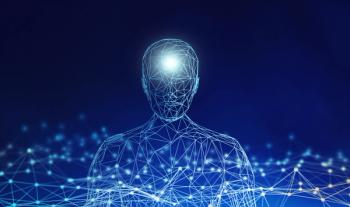
- Vol 38, Issue 10
Psychiatry in the Year 2500: Lessons Learned From History
What will psychiatric practice look like in the future?
For the past decade, I have taught 6-hour annual seminars on the history of psychiatry to psychiatric residents. This course was assigned to me, in part, because I have lived through the history of psychiatry for more than 50 years. Through this seminar, my residents and I have come to realize that each generation’s members, ourselves included, look back on earlier psychiatric concepts and practices, from the ancients right through recent times, with a mixture of bemusement, pity, and horror. Our bemusement and pity stem from previous eras’ well-intentioned but quaint or misguided ideas based on scientific ignorance, whereas our horror is evoked by seemingly inhumane practices inflicted on psychiatrically vulnerable populations.1
Assuming humans survive and continue doing competent science, we can imagine psychiatrists of the year 2500, enjoying knowledge far more advanced than ours, and reacting to our ideas and practices, too, with bemusement, pity, and horror. From this viewpoint, let us try to envision the history of future psychiatry, to not only guess what might be possible in 2500, but also to imagine how 26th-century psychiatrists might perceive how we think and practice during our psychiatric moments in time.
Overall, we hope that they might view us sympathetically, as trying hard to do good work with what we have, constrained by our limited concepts; by our physics, chemistry, biology, psychological, and social science tools; and by our sociocultural-economic structures. This perspective reminds us that current theories, diagnoses, and methods of assessment, treatment, and prevention are at best temporary placeholders in the arc of psychiatric history, many destined to be replaced within a generation or 2.
Unable to search 2500’s PubMed, we cannot cite the next half-millennium’s scholarly publications. Although we are unable to foresee what are certain to be surprising discoveries, we can future-cast by extending contemporary research and technologies. We can also invoke developments envisioned by today’s keenest scientists.1 From such perspectives, what contemporary psychiatric sacred cows, practices, and professional delusions (or to be kinder, illusions) might 26th-century psychiatrists see as deserving to be thrown into the trash bin of psychiatric history?
Psychiatric Theories
In 2500, most of today’s aminergic, cognitive, psychoanalytic, and family process theories are likely to be viewed as
By 2500, scientists may have clarified the mechanisms and impacts of genetic, epigenetic, and huge varieties of elusive physical and psychosocial environmental forces. We may know how psychobiological processes, from molecular to transpersonal over lifespans, influence psychiatric health. Consequently, models of the mind and brain, coping and adaptation, and family and social function will evolve accordingly. As more nuanced mechanisms are delineated, old theories will drop and new ones will emerge.
Conducting Psychiatric Assessments
In 2500, most of today’s assessment methods will be considered archaic and excessively labor intensive. Predominantly dependent on prolonged self-reported histories elicited face to face, human-to-human psychiatric assessment interviews will be regarded as inefficient, incomplete, and remarkably error-prone, faulted for being susceptible to ubiquitous and influential
By 2500, such biases will have been (hopefully) largely eliminated with the use of artificial intelligence (AI)–assisted assessment tools. Human assessors will come into play only after initial screening assessments have been completed. Constantly refined over years, mechanisms for obtaining dynamical biopsychosocial fingerprints might produce highly nuanced and individualized
Making Diagnostic Formulations
In 2500, most of today’s psychiatric diagnoses as compiled in DSM-5 will be viewed as primitive, superficial descriptions at best, on par with antiquated terms like rubor, calor, and dolor, or perhaps pneumonia in general medicine.
By 2500, psychiatric diagnoses might be calculated along lines of precision psychiatry, encompassing individuals’ cell-specific diagnoses, brain functional neuroanatomy and connectivity patterns, interpersonal interactions, life events, and appraisals of deviant behaviors, all contextualized within patients’ micro- and macro-cultural frameworks. What we now call multiple comorbidities and varieties of major psychiatric disorders will be cast as highly elaborated and differentiated
Looking at Treatments
By 2500, virtually all of today’s psychiatric medication, somatic, and psychotherapeutic treatments will be viewed as archaic. Psychiatrists in 2500 will shudder at the hit-or-miss application and modest effectiveness of our biological and psychotherapeutic interventions as well as their many adverse effects.3 They will find it hard to understand why clinicians in the early 21st century permitted patients with substantial psychic pain related to psychosis, depression, and cravings to suffer for days and weeks before being administered substantial relief.9 They will feel sorry that patients had to waste so much time in ineffective treatments (in addition to traveling to and from these treatments) and endure years of poor quality of life.
By the year 2500, psychiatric patients might access a host of wearable and implantable devices that both monitor ongoing status and administer experiential (eg, educational, interactive, psychotherapeutic) and direct biological interventions.10,11
For reasons of efficiency and effectiveness, AI-based personalized robots (robotherapeutic i-BOTs12) and individualized game-based (i-SIM13) treatments might prevail. I-BOTs could provide social support and companionship on one hand, and, on the other, train patients to develop more effective social skills with specific individuals, individuals in general, and groups. Based on moment-to-moment data from personalized smartphones and auditory-visual-physiological sensors, these devices might detect when individuals experience difficulties and initiate first-order personal coaching, which might up-regulate to personalized psychotherapies. When i-BOTS sense that their resources are insufficient to adequately manage difficulties, they might signal a need for higher-level services to the patient’s personal health concierge, formerly known as a primary care clinician, for triage to higher levels of care, including human clinicians, who can (as it were) think outside the BOT.
By means of i-SIM therapeutics and virtual reality–based games, which could use holographic avatars to reenact earlier life events and current stressful interpersonal or other toxic environments, patients might learn to overcome fears, fixations, deficient emotional regulatory capacities, and other challenges.
For interventions requiring biologicals, the psychiatrists of 2500 may be able to tailor everything from medication types and dosing schedules to delivery systems and routes of administration, basing them on patient-centered analyses using genes, epigenetic patterns, brain circuitry, microbiomes, and psychosocial factors.14
Neurostimulatory interventions might feature stereotactic membrane–like skullcaps, capable of focusing deep ultrasound and other noninvasive stimuli at precise targets to promote local neogenesis.15,16 Optogenetic-guided retroviral interventions might enhance and sculpt specific brain nuclei and connection pathways.17 Umpteenth-generation CRISPR-like genetic interventions might reverse neuropathological processes associated with excessive pruning, dysregulated emotional and attentional centers, impulsivity, habit formation, and craving.18 Anti-neuroinflammatory agents and neuroplaque removers might inhibit and reverse degenerative and other psychiatric diseases,19 while individualized biomic brews might enhance healthier microbiomes.20
Since unrelenting psychic pain in anxiety, mood, psychotic, and other disorders can activate and kindle terrifying, auto-traumatizing memory patterns (further augmenting posttraumatic stress disorder), patients in extreme psychic pain might be treated with psych-anesthetics. These agents might acutely alleviate psych-aches and induce therapeutic sleep, during which neurogenerative treatments might be applied.
With respect to treatment settings, few ambulatory patients will travel to clinicians’ offices or treatment centers, as virtually all interventions will be amenable to remote administration via teletreatment.21,22 Who would want to spend hours traveling to and from clinicians’ offices when 3-D telemedicine permits individual, tele-family, and tele-group therapy, even with participants in different locations, time zones, and continents?
When necessary, individuals who are highly disturbed will still be treated in specialized sanctuary-like medical treatment centers, usually for brief periods of time. Thanks to thorough assessments and deep data mining, extremely accurate assessments of needs and risks should be available for comprehensive discharge planning.
For socialization, education, training, and rehabilitation purposes, actual live human gatherings are likely to endure, as they have for many centuries.
The Promise of Prevention
In 2500, psychiatrists will view the early 21st century as virtually devoid of meaningful efforts to prevent psychiatric disorders. They will see that even when risk factors were well known and identified, few public health efforts were designed to minimize subsequent emergence of psychiatrist disorders.23
By 2500 (with hopefully few biases), public health programs might identify and conduct more intensive assessments of high-risk neighborhoods, individuals, and families, and better provide indicated social and individual-based interventions. Thanks to immediate diagnoses of new pregnancies—and based on intrauterine genome and epigenetic scans as well as prenatal neurotemperamental assessments—precision interventions could assist with repairs based on advanced gene- and epigene-manipulation techniques, while other individually tailored preventive interventions may also be implemented.
The Business of Psychiatry
In 2500, psychiatrists will find many of our contemporary practices for training, certifying, and recertifying psychiatrists to be laughable. They may appreciate that the quasi-apprentice model was probably the best that could be achieved under current circumstances. They will also note that, although well intended, cumbersome administrative superstructures required that practitioners, academic faculty, trainees, and staff waste huge amounts of time in mind-numbing educational training and assessment rituals of unproven worth. They will further note that many tedious rituals revolved around scheduling, electronic medical records, charting, billing, ineffective meetings, and other time- and energy-swallowing administrative activities.
By 2500, based on increasingly effective and evidence-based learning methods, psychiatric training will utilize large numbers of simulators that will challenge, train, and meticulously assess trainees’ competencies in handling nuanced scenarios. Carefully constructed games will assess clinical decision-making and practice skills, knowledge, professionalism, communication, and systems-based care, each tailored for specific environments in which the clinicians serve. Certifications for specific necessary skills will be fluidly conducted, with in-house, on-the-job, and just-in-time learning, training and certification, renewable as new techniques and situations arise. Medical record keeping and other administrative functions will largely be allocated to natural language, administratively coded robo-scribes. These AI devices might also summarize and bring clinicians’ attention to salient portions of patients’ medical information before their scheduled encounters.24
What Will Endure
In 2500, psychiatrists will find themselves sharing several characteristics with early 21st century psychiatrists. Given human nature, at least some citizens will still be prone to intermittently go off the rails; psychiatric disorders are still likely to be stigmatized; and psychiatric gurus are still likely to believe that there are too many patients, too few clinicians, too little knowledge, too few resources, and too little money for what they do. And, given human nature, in 2500 a high value will still be placed on deep, confiding, empathic interpersonal relationships, including clinician-patient relationships.25
Conclusions and Implications
Why bother teaching the history of psychiatry by highlighting how future generations might appraise today’s psychiatric practices, and envisioning how they might practice? My intention is not to throw cold water on the sincere efforts of today’s dedicated, well-intentioned professionals. Rather, I hope these musings offer a perspective on our place in the history of psychiatry’s arc over time. We try to do the best we can with what we have, but we should not be self-satisfied about our efforts.
If any of these fanciful visions of future psychiatric practice seem worthwhile, they might provide aspirational goals, and motivation to realize these goals. And, if any of these fanciful visions seem dystopian, they might provoke us to develop better alternatives.
Dr Yager is a professor in the Department of Psychiatry, University of Colorado School of Medicine, Anschutz Medical Campus.
References
1. Shorter E. A History of Psychiatry: From the Era of the Asylum to the Age of Prozac. John Wiley & Sons; 1997.
2. Kaku M. The Future of the Mind: The Scientific Quest to Understand, Enhance, and Empower the Mind. Doubleday; 2014.
3. Ghaemi SN. Paradigms of psychiatry: eclecticism and its discontents. Curr Opin Psychiatry. 2006;19(6):619-624.
4. Ghaemi SN. The rise and fall of the biopsychosocial model. Br J Psychiatry. 2009;195(1):3-4.
5. Braus BR, Rummans TA, Lapid MI, et al. Clinicians and cognitive bias: a case of frontotemporal dementia misdiagnosed as conversion disorder. Am J Psychiatry. 2019;176(9):690-693.
6. Shah NJ, Arrubla J, Rajkumar R, at al. Multimodal fingerprints of resting state networks as assessed by simultaneous trimodal MR-PET-EEG imaging. Sci Rep. 2017;7(1):6452.
7. Herland A, Maoz BM, Das D, et al. Quantitative prediction of human pharmacokinetic responses to drugs via fluidically coupled vascularized organ chips. Nat Biomed Eng. 2020;4(4):421-436.
8. Rush AJ, Ibrahim HM. Speculations on the future of psychiatric diagnosis. J Nerv Ment Dis. 2018;206(6):481-487.
9. Tarrier N, Khan S, Cater J, Picken A. The subjective consequences of suffering a first episode psychosis: trauma and suicide behaviour. Soc Psychiatry Psychiatr Epidemiol. 2007;42(1):29-35.
10. Cormack F, McCue M, Taptiklis N, et al. Wearable technology for high-frequency cognitive and mood assessment in major depressive disorder: longitudinal observational study. JMIR Ment Health. 2019;6(11):e12814.
11. Sequeira L, Battaglia M, Perrotta S, et al. Digital phenotyping with mobile and wearable devices: advanced symptom measurement in child and adolescent depression. J Am Acad Child Adolesc Psychiatry. 2019;58(9):841-845.
12. Fiske A, Henningsen P, Buyx A. Your robot therapist will see you now: ethical implications of embodied artificial intelligence in psychiatry, psychology, and psychotherapy. J Med Internet Res. 2019;21(5):e13216.
13. Catalan C. Mind games. Lancet Psychiatry. 2018;5(9):e22-e23.
14. Serretti A. The present and future of precision medicine in psychiatry: focus on clinical psychopharmacology of antidepressants. Clin Psychopharmacol Neurosci. 2018;16(1):1-6.
15. Bowary P, Greenberg BD. Noninvasive focused ultrasound for neuromodulation: a review. Psychiatr Clin North Am. 2018;41(3):505-514.
16. Lewis PM, Thomson RH, Rosenfeld JV, Fitzgerald PB. Brain neuromodulation techniques: a review. Neuroscientist. 2016;22(4):406-421.
17. Barnett SC, Perry BAL, Dalrymple-Alford JC, Parr-Brownlie LC. Optogenetic stimulation: understanding memory and treating deficits. Hippocampus. 2018;28(7):457-470.
18. Duan J, Sanders AR, Gejman PV. From schizophrenia genetics to disease biology: harnessing new concepts and technologies. J Psychiatr Brain Sci. 2019;4:e190014.
19. Rosenblat JD. Targeting the immune system in the treatment of bipolar disorder. Psychopharmacology (Berl). 2019;236(10):2909-2921.
20. Evrensel A, Ünsalver BÖ, Ceylan ME. Therapeutic potential of the microbiome in the treatment of neuropsychiatric disorders. Med Sci (Basel). 2019;7(2):21.
21. Hulsbosch AM, Nugter MA, Tamis P, Kroon H. Videoconferencing in a mental health service in The Netherlands: a randomized controlled trial on patient satisfaction and clinical outcomes for outpatients with severe mental illness. J Telemed Telecare. 2017;23(5):513-520.
22. Yellowlees P, Shore JH. Telepsychiatry and Health Technologies: A Guide for Mental Health Professional. American Psychiatric Association Publishing; 2018
23. Arango C, Díaz-Caneja CM, McGorry PD, et al. Preventive strategies for mental health. Lancet Psychiatry. 2018;5(7):591-604.
24. Miller DD, Brown EW. Artificial intelligence in medical practice: the question to the answer? Am J Med. 2018;131(2):129-133.
25. Zulman DM, Haverfield MC, Shaw JG, et al. Practices to foster physician presence and connection with patients in the clinical encounter. JAMA. 2020;323(1):70-81. ❒
Articles in this issue
about 4 years ago
Facilitating Autism Diagnosisabout 4 years ago
Incorporating Well-Being Into Child and Adolescent Psychiatryabout 4 years ago
Screen Media Activity in Youth: Friend or Fiend?about 4 years ago
Supporting Youth: New Findings in Youth Depression and Beyondabout 4 years ago
Traveling the Middle Road Between Skepticism and Scientismabout 4 years ago
Prompts (for Doctors Who Write Poetry)about 4 years ago
Bipolar Depression: How Not to Miss the Diagnosisabout 4 years ago
How Many Lives Have Been Saved by COVID-19 Vaccinations?about 4 years ago
A Brain-Based Approach to PsychotherapyNewsletter
Receive trusted psychiatric news, expert analysis, and clinical insights — subscribe today to support your practice and your patients.















